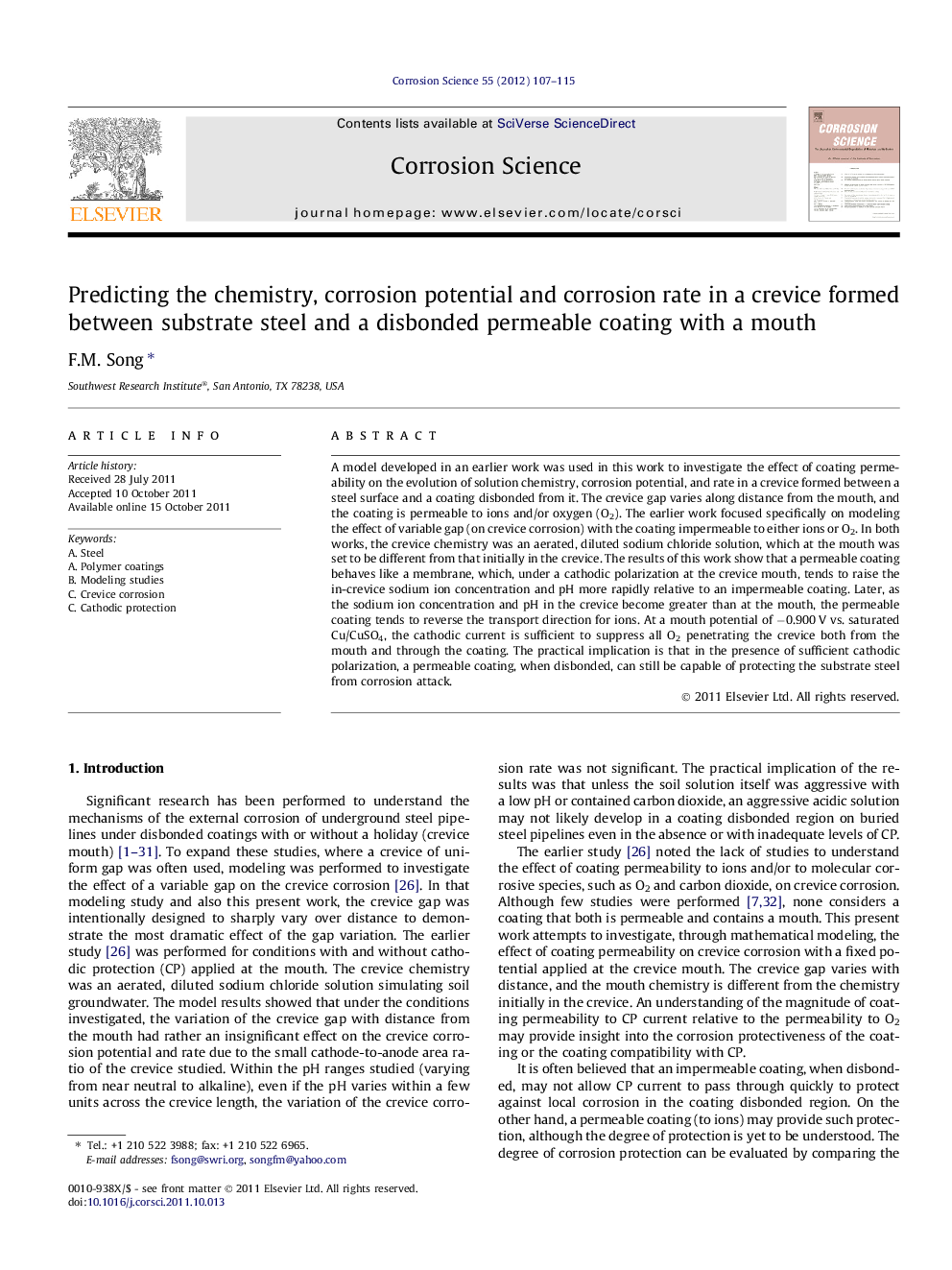| Article ID | Journal | Published Year | Pages | File Type |
|---|---|---|---|---|
| 1469905 | Corrosion Science | 2012 | 9 Pages |
A model developed in an earlier work was used in this work to investigate the effect of coating permeability on the evolution of solution chemistry, corrosion potential, and rate in a crevice formed between a steel surface and a coating disbonded from it. The crevice gap varies along distance from the mouth, and the coating is permeable to ions and/or oxygen (O2). The earlier work focused specifically on modeling the effect of variable gap (on crevice corrosion) with the coating impermeable to either ions or O2. In both works, the crevice chemistry was an aerated, diluted sodium chloride solution, which at the mouth was set to be different from that initially in the crevice. The results of this work show that a permeable coating behaves like a membrane, which, under a cathodic polarization at the crevice mouth, tends to raise the in-crevice sodium ion concentration and pH more rapidly relative to an impermeable coating. Later, as the sodium ion concentration and pH in the crevice become greater than at the mouth, the permeable coating tends to reverse the transport direction for ions. At a mouth potential of −0.900 V vs. saturated Cu/CuSO4, the cathodic current is sufficient to suppress all O2 penetrating the crevice both from the mouth and through the coating. The practical implication is that in the presence of sufficient cathodic polarization, a permeable coating, when disbonded, can still be capable of protecting the substrate steel from corrosion attack.
► The effect of coating permeability on steel crevice corrosion was modeled. ► The crevice gap varies along distance from the crevice mouth. ► The model results and their practical significance were discussed.
